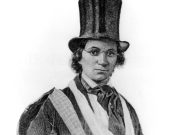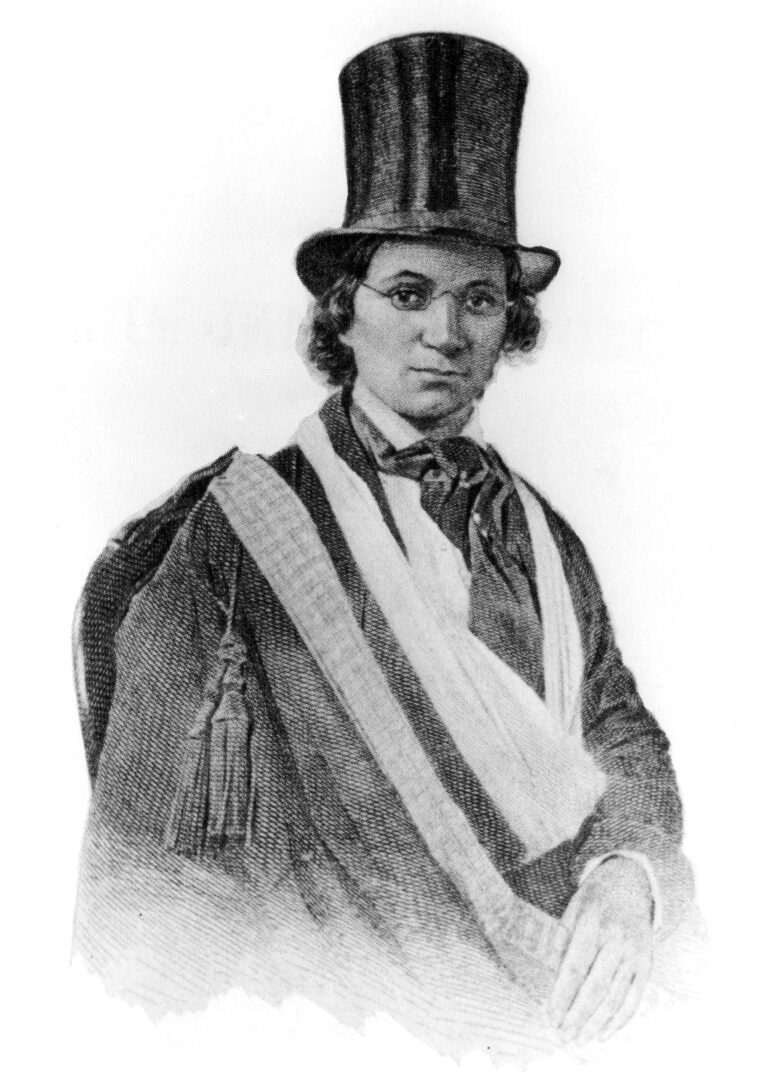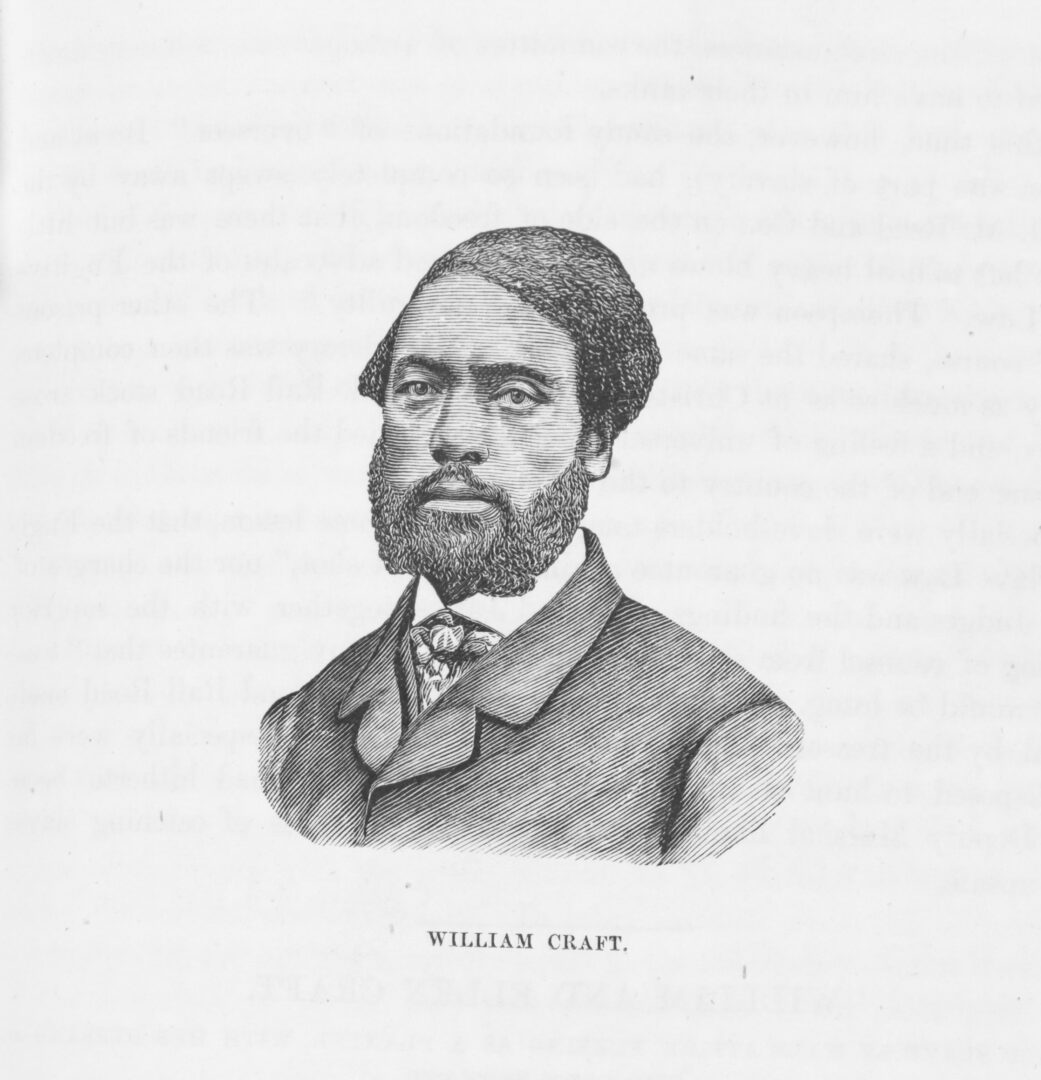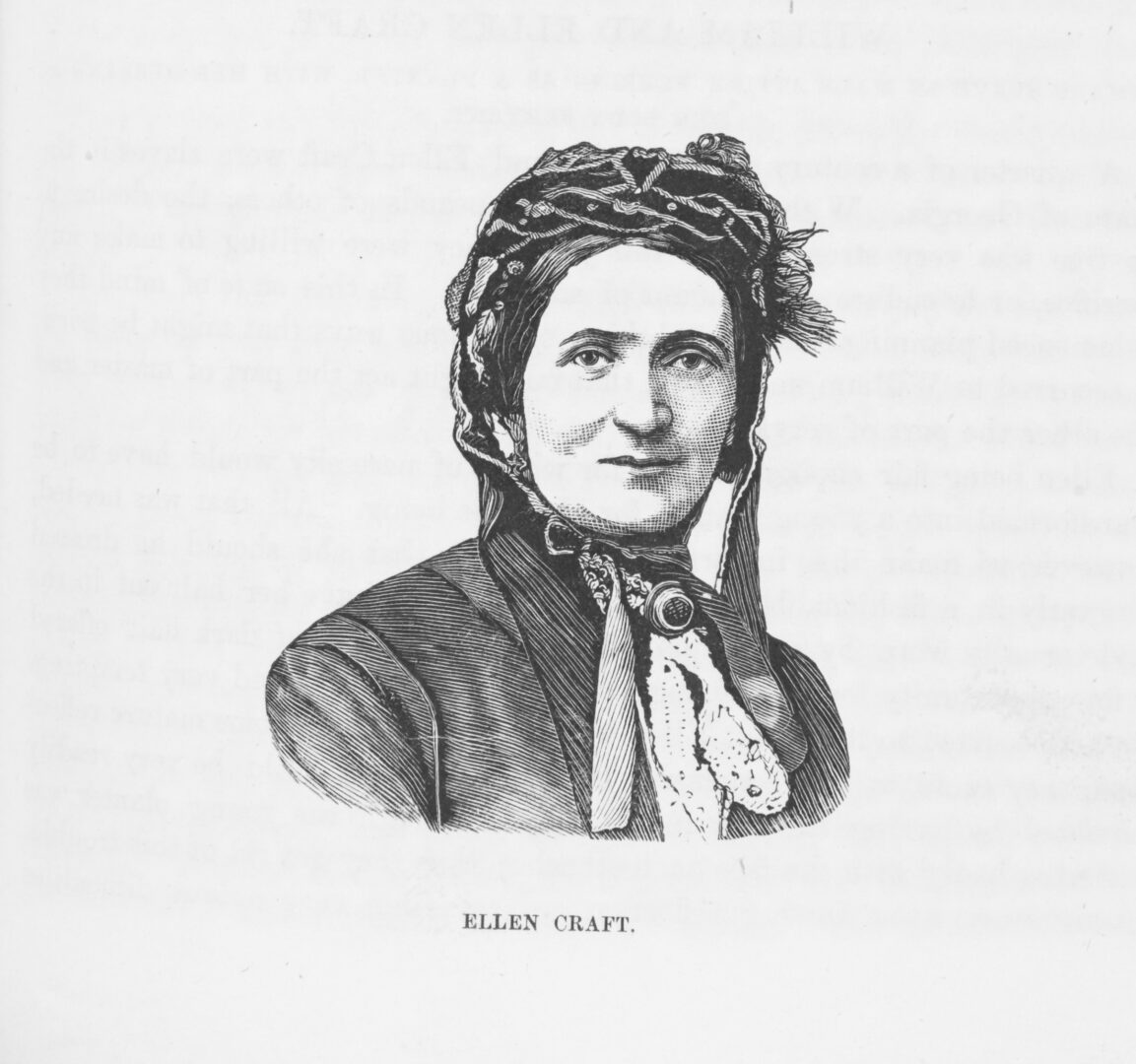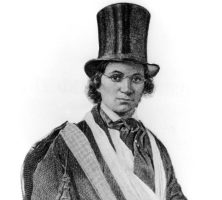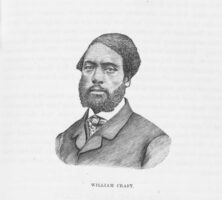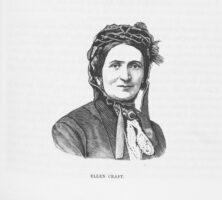William and Ellen Craft were an enslaved couple from Macon who gained celebrity after a daring, novel, and very public escape in December 1848. The daughter of an African American woman and her white enslaver, Ellen looked white and was able to dress as a southern slaveholder in trousers, top hat, and short hair to avoid detection by slave-catchers. Her darker-skinned husband, William, accompanied her by masquerading as her attentive valet. They journeyed by train from Macon to Savannah, where they boarded a steamship bound for Charleston, South Carolina. From there they took another steamer to Wilmington, North Carolina, then a train to just outside Fredericksburg, Virginia. They boarded yet another steamer bound for Washington, D.C., and finally proceeded by train to Baltimore, Maryland, and on across the Mason-Dixon line into Pennsylvania. Despite several close calls, the couple arrived in Philadelphia on Christmas Sunday. They thought their freedom was then secure.
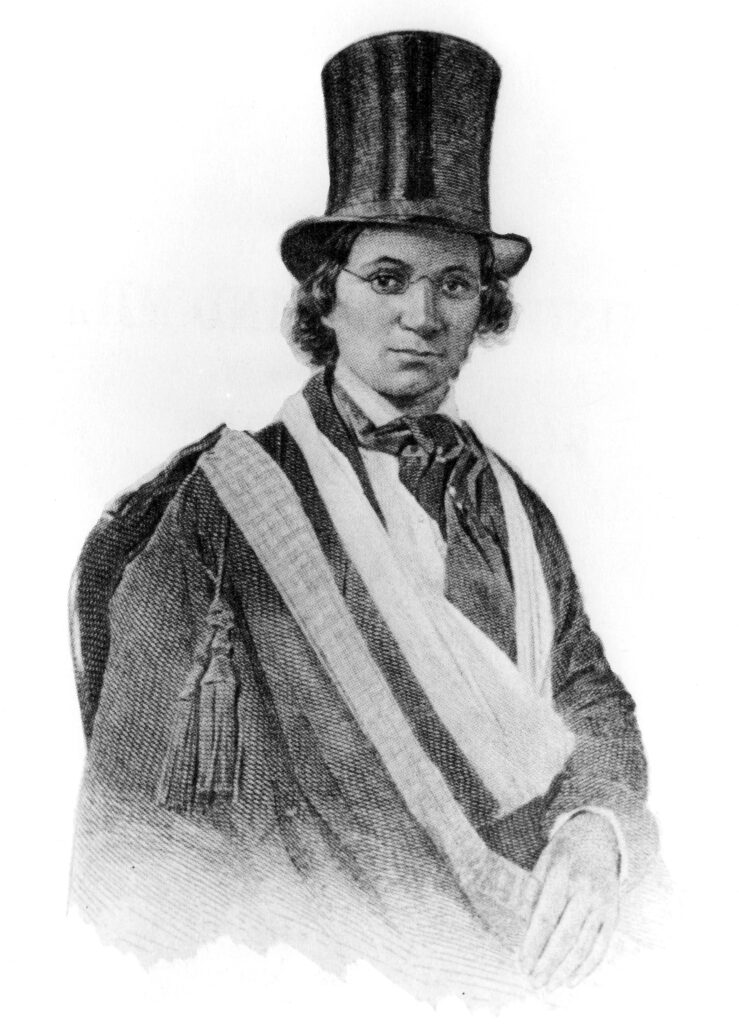
The Crafts quickly moved to Boston, which had an established free Black community on Beacon Hill and a well-organized, protective abolitionist activity. William, a carpenter, founded a thriving furniture business. The pair looked forward to celebrating marriage sanctioned by a Christian church and rearing children who were free. They participated with William Wells Brown, also a fugitive from slavery, in antislavery lectures throughout New England, where they quickly won the hearts of audiences with their romantic tale of escape.
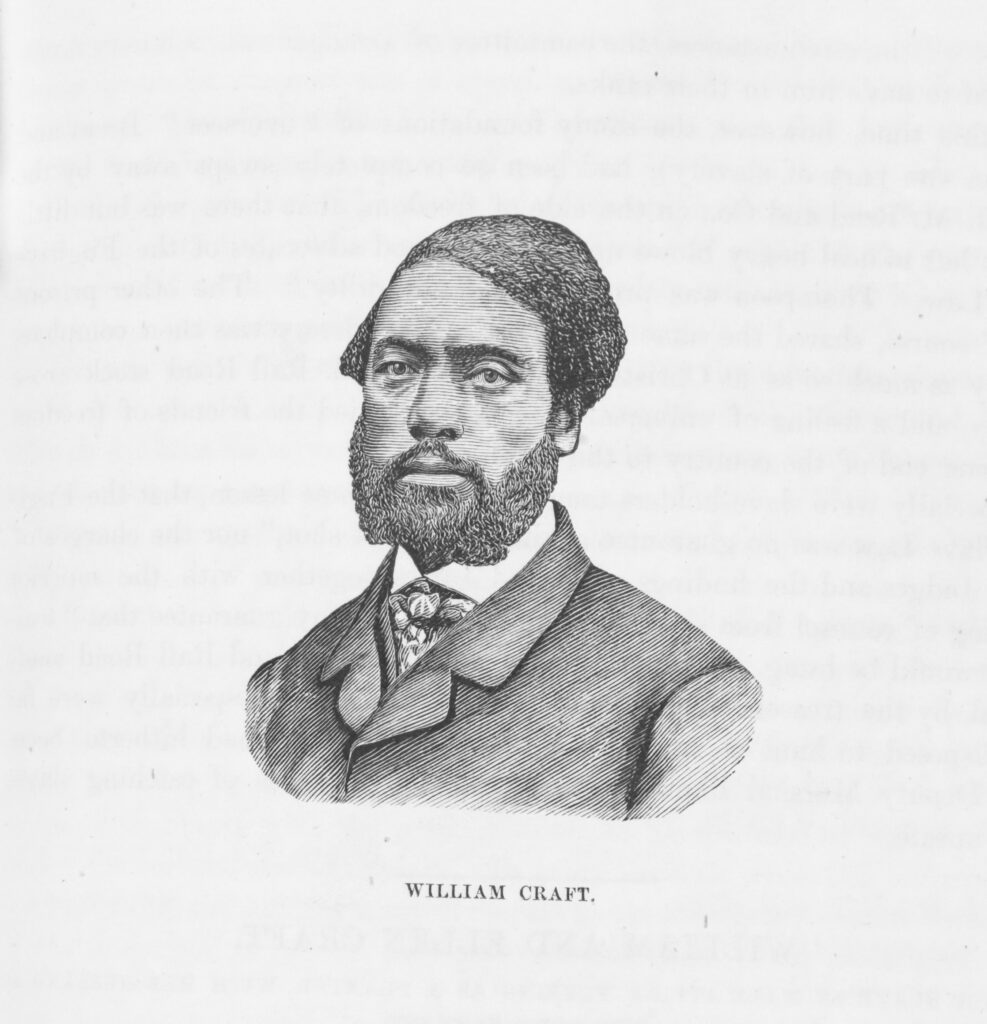
Courtesy of The New York Public Library Digital Collections
In 1850, however, Congress disturbed their peace by ratifying the Fugitive Slave Act, which made it a crime for residents of free states to harbor or aid fugitives from slavery like the Crafts. The act also handsomely rewarded officers of the law for assisting enslavers by apprehending their fugitive “property” and sending them back to slavery.
The ink had barely dried on this new bill when two bounty hunters named Willis Hughes and John Knight traveled north from Macon to return the Crafts to slavery by persuasion or by force. They met with resistance and harassment from Black and white Bostonians, who moved the couple around the city to elude their detection and recapture. Defeated, Hughes and Knight soon returned to Georgia. The Crafts no longer felt safe, however, even in the northern states. In December 1850, just two years after they had fled slavery, they sailed into calmer waters in Liverpool, England.
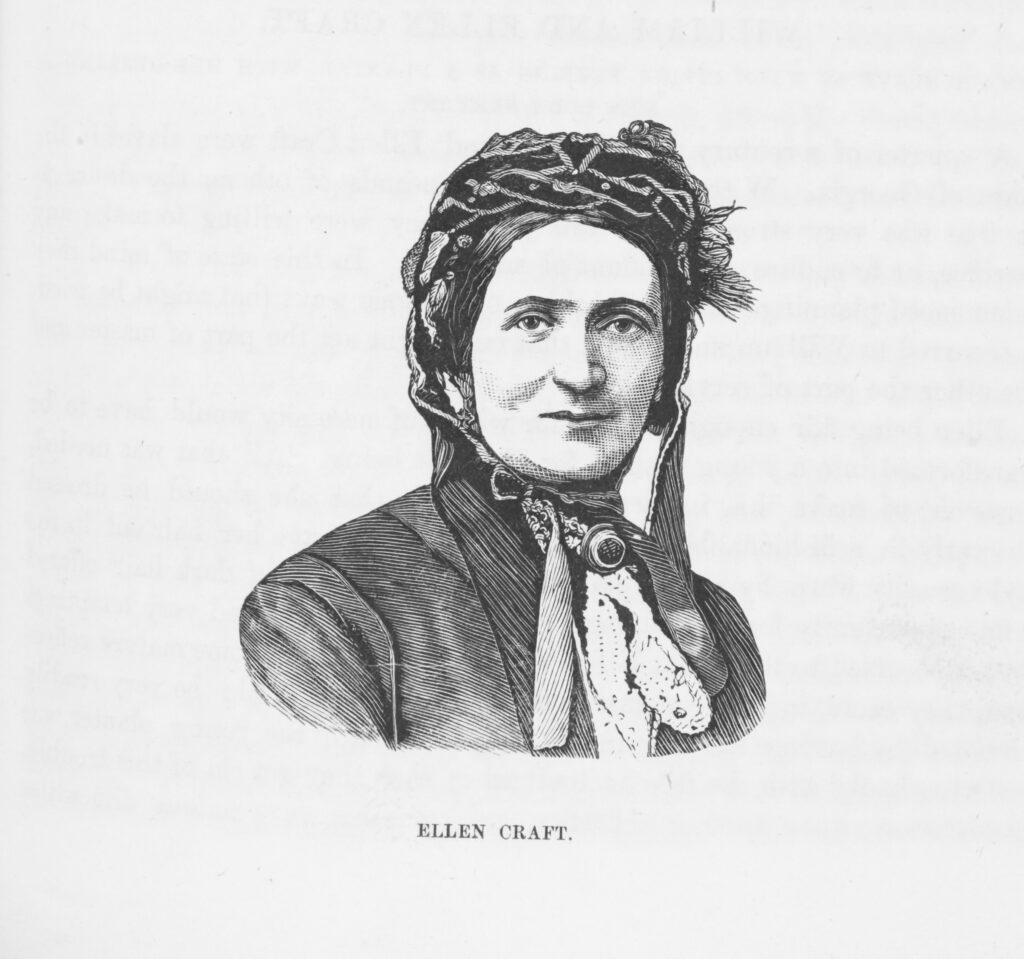
From The Underground Rail Road, by W. Still
The Crafts attended the Ockham School in Surrey for three years before settling in West London to raise a bustling family of five children: Charles Estlin Phillips, William, Brougham, Alfred, and Ellen. They continued as public figures in the abolitionist movement by lecturing in England and Scotland and publishing their narrative, Running a Thousand Miles for Freedom (1860). While the title page attributes sole authorship of their memoir to William, scholarship in the twenty-first century has revisited Ellen’s involvement in writing and shaping their story. Several scholars consider Ellen’s appearances with William at antislavery lectures as evidence of the memoir’s collaborative roots, in addition to testimonies of Ellen’s assertiveness that were provided by abolitionist friends during the postbellum years.
In June 1851 they staged a demonstration against American slavery at the London Great Exhibition, one of the most memorable and influential spectacles of the nineteenth century. They strolled through the American section arm-in-arm with white abolitionist friends to demonstrate the irony of encountering more racial tolerance in England—a country that had banned slavery from its Caribbean colonies by 1838—than in the so-called democratic United States. One year later, Ellen published an open letter in antislavery newspapers to refute savage rumors that she was tired of the responsibilities of freedom and wanted to be enslaved again.
During their nineteen years in England, the Crafts pursued their intellectual development, raised their family, and established a livelihood. They followed such various pursuits as teaching, running a boarding house, and (for William) creating commercial and mercantile agreements in West Africa.
After reunions in Boston, the couple returned to Georgia in 1870. They settled outside of Savannah in Bryan County, where they raised money from northern publishers and antislavery friends to purchase 1,800 acres of land. They then launched the Woodville Co-operative Farm School in 1873 for the education and employment of newly freed men and women. Scandal erupted in 1876 when some of William’s backers accused him of personally using funds intended for charitable purposes. He sued for libel to clear his name in Boston’s courts but in 1878 lost the case along with many longtime allies.
Soon after, the school at Woodville closed from lack of funding. William struggled to maintain the farm in the face of increased debt, plummeting cotton prices, and increasing anti-Black violence and legal oppression. In 1890 the Crafts moved to Charleston to live with their daughter’s family. Ellen died in 1891; William died in 1900.
In 1996 Ellen was inducted into Georgia Women of Achievement.


